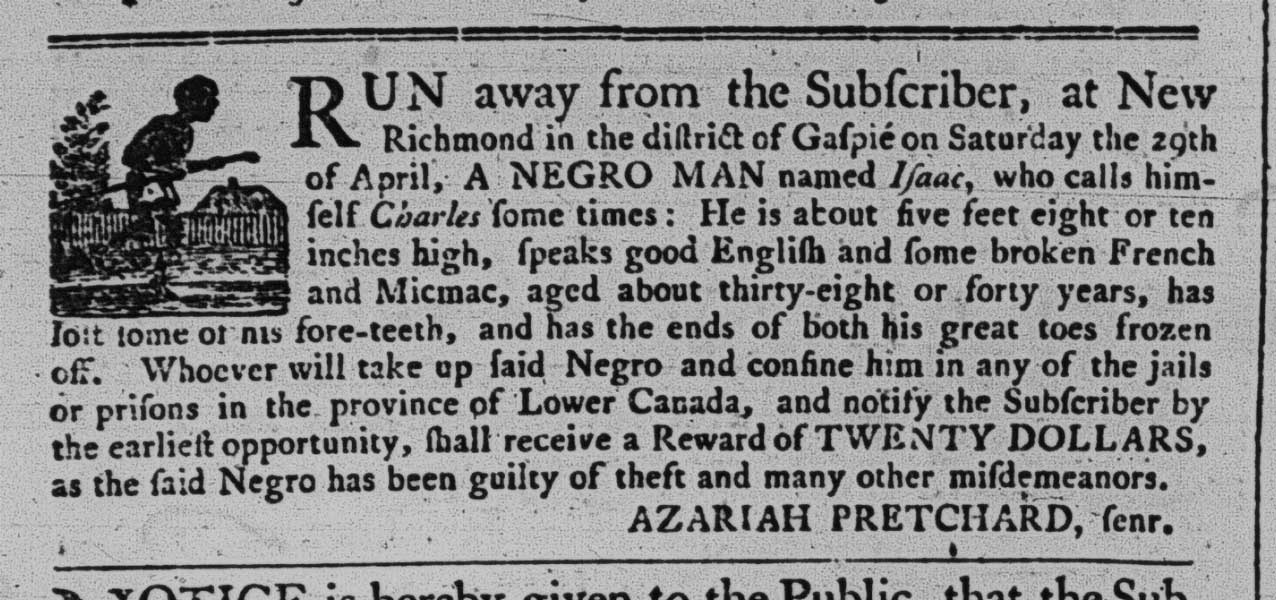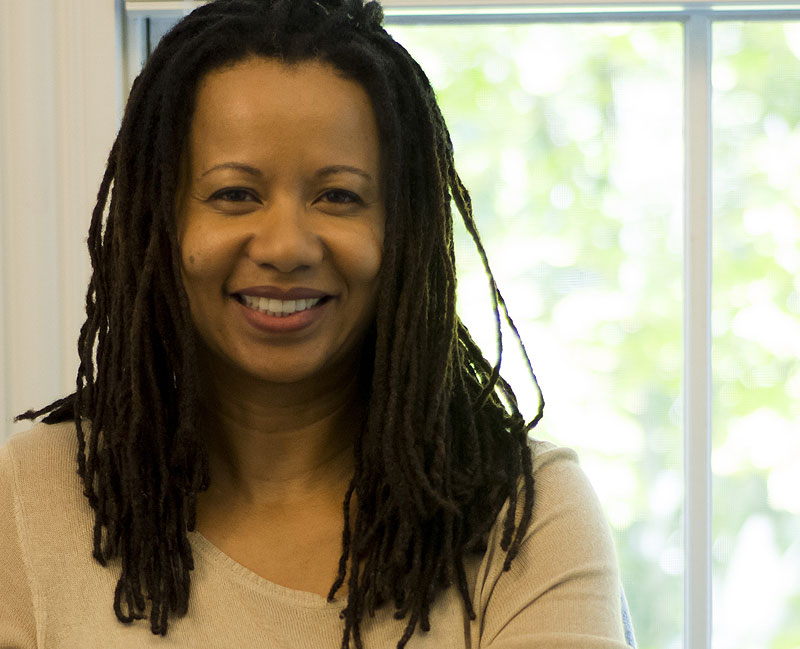
Azariah Pretchard Senr., RUN away from the Subscriber, Quebec Gazette, 22 May 1794, vol. 1506, p. 5, Bibliothèque et Archives nationales du Québec, Montreal.
He… has the ends of both his great toes frozen off: Enslaved and Free Black Presence, Experience, and Representation in the Quebec Winter
Charmaine A. Nelson, Professor of Art History and Tier I Canada Research Chair in Transatlantic Black Diasporic Art and Community Engagement at NSCAD University, Halifax, NS
When in 1688, King Louis XIV of France was petitioned to allow the importation of enslaved people from the French Caribbean into New France, he expressed concern for the ability of Africans to adapt to Canadian winters. With the “success” of New England Slavery upheld as evidence of African acclimatization in the region, royal assent was given in 1689. Although present in the region from at least the early seventeenth century, both free and enslaved blacks, regardless of ancestry, have been continuously unhomed in Canada. The erasure of an historical black Canadian presence has in part been facilitated by historical pseudo-scientific ideas of African unsuitability to Canada’s cold climate.
This lecture develops two Quebec case studies of the representation of black people in the Canadian winter, the first a set of eighteenth-century fugitive slave advertisements (which will be analyzed as visual culture), and the second, a nineteenth-century studio portrait of African-Canadian sitters by the prominent nineteenth-century photography studio William Notman and Son. The first case study explores a set of fugitive slave advertisements for winter escapes to expose what they reveal about the nature of slave experience and resistance in Canada. The second case study argues that the choice of a winter backdrop for a Montreal studio portrait in 1901, was a bold counter-hegemonic assertion of African-Canadian belonging at a moment of wide-spread anti-black immigration sentiment.







